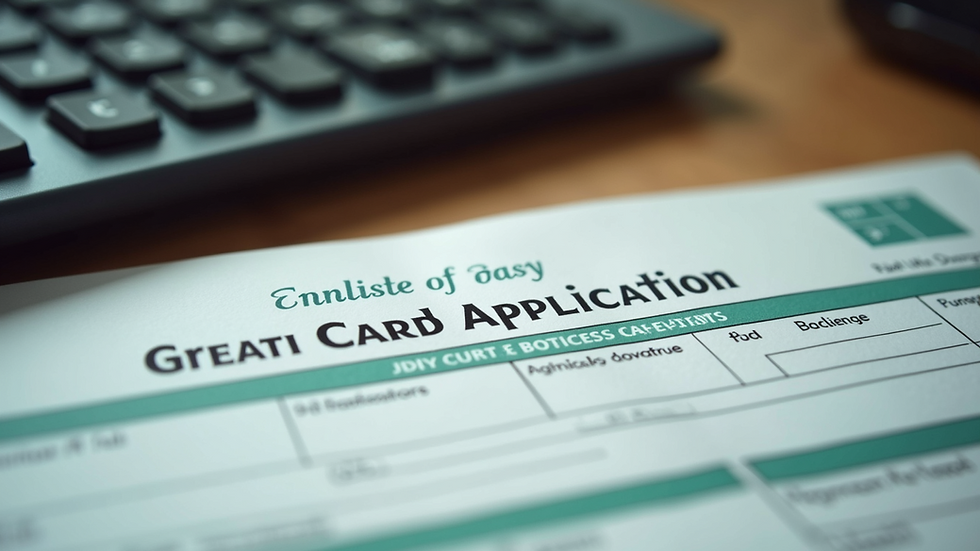Mastering the Adjustment of Status Journey
- Attorney Denise P. Cabrera
- Aug 29
- 4 min read
Navigating the path to becoming a lawful permanent resident in the United States can feel overwhelming. The us residency adjustment process involves several critical steps, paperwork, and legal requirements. Understanding this journey thoroughly can make the experience smoother and increase your chances of success. This guide breaks down the essentials, providing clear explanations and practical advice to help you master the adjustment of status journey.
Understanding US Residency Adjustment
The us residency adjustment refers to the process by which an individual already in the United States changes their immigration status to that of a lawful permanent resident (green card holder). This process is essential for those who entered the country on a temporary visa or under other non-immigrant statuses but now seek permanent residency.
Adjustment of status is different from consular processing, where applicants apply for a green card from outside the U.S. The adjustment process allows eligible individuals to apply without leaving the country, which can be more convenient and less disruptive.
Why is US Residency Adjustment Important?
It allows you to live and work permanently in the U.S.
It provides a path to citizenship after meeting residency requirements.
It offers protection under U.S. immigration laws.
It enables travel flexibility with a green card.
Understanding the eligibility criteria and the documentation required is crucial before starting the process.

Eligibility Criteria for US Residency Adjustment
Before applying, you must confirm that you meet the eligibility requirements. These vary depending on your current status and the basis for your green card application. Common eligibility categories include:
Family-based: Immediate relatives of U.S. citizens or lawful permanent residents.
Employment-based: Individuals sponsored by an employer.
Refugees or asylees: Those granted asylum or refugee status.
Special categories: Including certain humanitarian programs or diversity lottery winners.
Key Requirements
You must be physically present in the U.S.
You must have entered the U.S. legally.
You must have an approved immigrant petition (such as Form I-130 or I-140).
You must be admissible to the U.S. (no disqualifying criminal or immigration violations).
If you are unsure about your eligibility, consulting an immigration attorney can provide clarity and guidance.

What are the steps for adjustment of status?
The adjustment of status journey involves several important steps. Each step requires careful attention to detail and timely action.
File the Immigrant Petition
Usually, a family member or employer files an immigrant petition on your behalf. This petition establishes your eligibility for a green card.
Wait for Priority Date to Become Current
Depending on your category, you may need to wait until your priority date is current according to the Visa Bulletin.
Submit Form I-485 (Application to Register Permanent Residence or Adjust Status)
This is the main application form for adjustment of status. Along with this, you must submit supporting documents such as proof of eligibility, medical examination results, and photographs.
Attend Biometrics Appointment
USCIS will schedule a biometrics appointment to collect your fingerprints, photograph, and signature.
Interview with USCIS
Most applicants will be required to attend an interview. Be prepared to answer questions about your application and background.
Receive Decision
USCIS will notify you of their decision. If approved, you will receive your green card in the mail.
Tips for a Successful Application
Double-check all forms for accuracy.
Submit all required supporting documents.
Respond promptly to any USCIS requests for additional information.
Prepare thoroughly for your interview.
For more detailed information, you can visit the adjustment of status process page.

Common Challenges and How to Overcome Them
The adjustment of status journey can present obstacles. Being aware of common challenges helps you prepare and avoid delays.
Incomplete or Incorrect Applications
Errors or missing documents can lead to Requests for Evidence (RFEs) or denials. Always review your application carefully and consider professional help if needed.
Long Processing Times
USCIS processing times vary widely. Stay patient and track your case status online. If your case is delayed beyond normal processing times, you may inquire with USCIS or seek legal assistance.
Interview Anxiety
Interviews can be stressful. Practice answering common questions and bring all requested documents. Dress professionally and arrive early.
Inadmissibility Issues
Certain criminal records or immigration violations can make you inadmissible. Waivers may be available, but these require legal expertise.
Tips for a Smooth US Residency Adjustment Experience
Start Early: Begin gathering documents and information well before you plan to file.
Keep Copies: Maintain copies of all forms and correspondence.
Stay Organized: Use checklists and calendars to track deadlines.
Seek Professional Help: Immigration attorneys or accredited representatives can provide valuable assistance.
Stay Informed: Immigration laws and policies can change. Keep up to date with official USCIS announcements.
By following these tips, you can reduce stress and improve your chances of a successful adjustment.
Moving Forward with Confidence
Mastering the us residency adjustment journey requires patience, preparation, and attention to detail. By understanding the eligibility requirements, following the correct steps, and anticipating challenges, you can navigate the process more effectively.
Remember, the adjustment of status process is designed to help eligible individuals become permanent residents without leaving the U.S. Taking the time to learn and prepare will empower you to move forward confidently toward your goal of lawful permanent residency.
With the right approach, your dream of living and working permanently in the United States can become a reality.






Comments